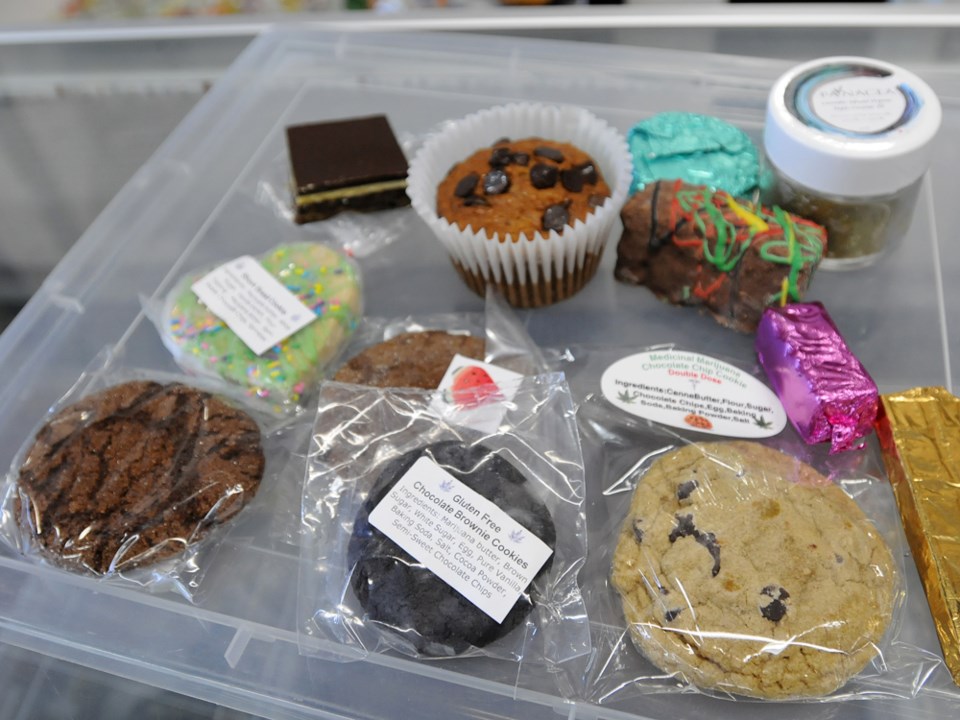The federal government is giving Canadians until Feb. 20 to pipe up on phase two of the nation’s ongoing roll out of legal cannabis.
Proposed regulations around edibles, extracts and topicals were released Dec. 20 and the main talking points centre around allowable THC levels, messaging and ensuring the packages are kid proof.
The main psychoactive ingredient in cannabis, THC levels will be confined to under 10 mg per package of edibles and 1,000 mg per package of topical creams or extracts.
Any beverage containing THC can’t be mixed with alcohol or other vitamin or mineral extracts, while limits will also be placed on any caffeine content.
Tantalus Labs CEO and Vancouverite Dan Sutton has been producing sun-grown cannabis since 2012 and gives the preliminary measures two green thumbs up.
“Any entrepreneur or [licensed producer] has a blue ocean of opportunity within this framework and any time spent complaining about restrictiveness is better used thinking about how to best serve the expectant market,” he told the Courier in an email. “Vaporizers, concentrates, edibles and beverages will all be exciting segments come October. Groups that start work early will be at a significant advantage.”
The proposed framework will become the law of the land by Oct. 17.
Other highlights include:
Edibles
* restricting the use of ingredients that could appeal to minors
* health warnings on all packaging
* no claims can be made touting health or nutritional benefits
* labelling will include the standardized cannabis symbol and a health warning message
* prohibiting the production of food and edibles in the same facility
Extracts
* restricting the use of ingredients — sweetener or colourants — that could appeal to minors or encourage consumption
* no flavours that could appeal to minors can be placed on product labels or vaping products
* a hard cap of 10 mg of THC per unit or 1,000 mg per package
* no claims can be made touting health or nutritional benefits
* cannabis symbols must be displayed on all packaging
Topicals
* restrictions will be placed on the types of permissible ingredients
* a hard cap of 1,000 mg of THC per package
* child-resistant packaging
* no claims can be made touting health or nutritional benefits
* cannabis symbols must be displayed on all packaging
Although largely supportive of the framework, Vancouver lawyer Kyla Lee suggested the 10 mg cap on edibles specifically could create unintended consequences.
“For a lot of people that’s not enough THC to produce the desired effect,” Lee told the Courier. “So because of the huge amount of packaging that is required from the Health Canada packaging regulations, it’s going to create a lot of waste because people are going to have buy multiple products to get the same impact.”
Largely unmentioned are any stipulations around possession, driving, travelling or where Canadians can use any of these products. Those talking points were front and centre prior to last year’s first go at legalization, and Lee expects those measures to be introduced before implementation.
“But it would be nice to see the government putting that messaging out there now because it’s good for people to have that consistent reminder especially when it comes to edible product,” she said. “Because you can eat your 10 milligrams of THC and feel fine for quite some time… and then half an hour later it hits you. You don’t want to be behind the wheel at that time.”
On the topic of behind the wheel, Lee said the new impaired driving laws that came into effect in December do contain topics of interest on the edibles front. Specifically, don’t ingest an edible and then drive, even if you get behind the wheel 10 minutes — long before the effects are typically felt — after the edible is consumed.
“Because it was within two hours of when you drove, then that is sufficient to establish that you were impaired at the time that you were driving,” Lee said. “It’s not a defence to claim that you took the edible and it hadn’t kicked in yet.”
Anyone wishing to chime in on the regulations can do so online at canada.ca/cannabis.
@JohnKurucz



